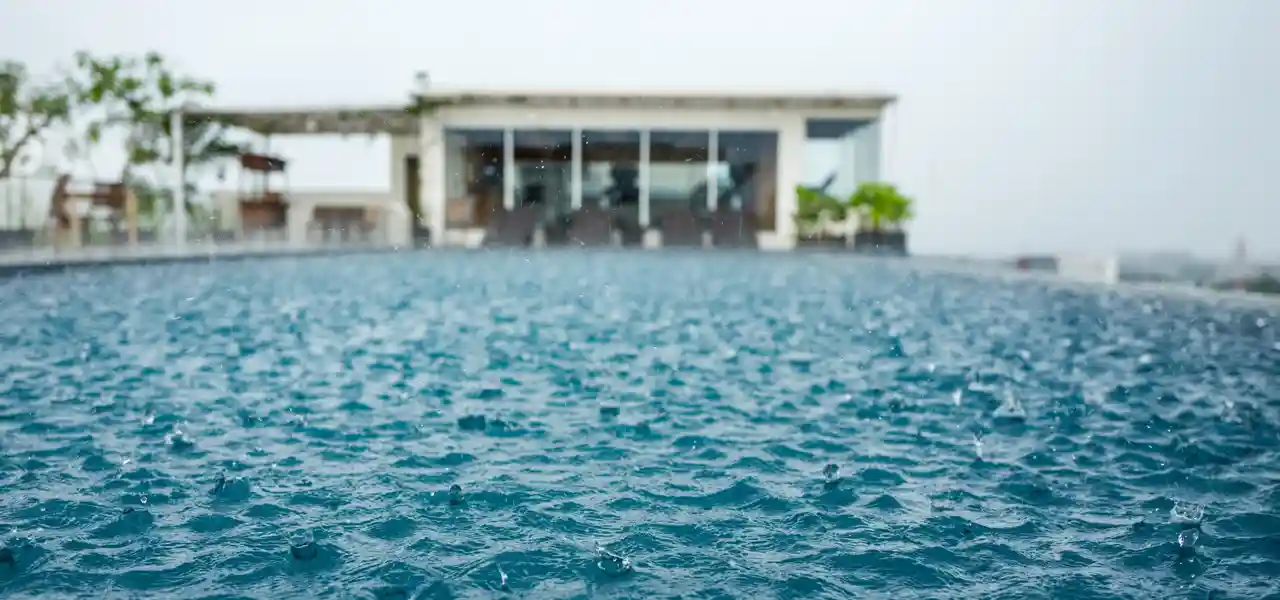FREE Standard Shipping On All Orders $100 or More!*

Preventing a Popped Pool
Draining an inground swimming pool is not difficult, it's just stressful. Pool owners worry about the pool popping out of the ground, or other major damage they've heard tales about. A concrete pool that "floats" or pops out of the ground is an extremely rare event. Most of them occur during major flooding events or hurricanes. Chances are, it won't be you, but just to be sure, you've got to be careful. Here's how to safely drain an inground pool and prevent a popped pool.
How to Prevent a Popped Pool
80% of the weight of a pool is water (8 lbs per gallon) and when full, an average inground pool can weigh 250,000 lbs! This is sufficient to hold back most hydrostatic pressure, or the pressure of underground water. Here are a few tips for preventing a popped pool.
1. Don't drain the pool during extended periods of heavy rain.
Depending on the topography surrounding the pool, a few hours of heavy rains could come to rest under the pool shell. This pressure, coupled with an empty pool, will result in the pool popping out of the ground.
2. Pump the discharge to a storm drain, or to a point far away from the pool.
If your discharge hose is not long enough, the water you pump out of the pool can come up under the pool, with immense pressure.
3. Pump downhill from the pool.
Survey the topography or terrain around the pool. Choose a discharge location where the water will continue to run away from the pool, and not collect in one area. If there are no downhill areas to pump towards, use more discharge hose, and move the hose often to prevent saturation and erosion.
4. Open the hydrostatic pressure relief plugs on the pool floor.
This is done when the pool is mostly drained out. Walk carefully down the center of the pool floor, and you should see the plastic plugs set into the plaster. Use a hammer and chisel to break out the plaster inside the cap, and then use large, straight pliers to twist out the threaded plug.
Many pools have several hydrostatic plugs in the pool floor. I will usually remove the one in the dead center of the pool floor, leaving the shallow floor area hydrostatic plugs intact. If I feel that a particular pool could be risky, then I will also remove the main drain cover immediately after draining, and remove the hydrostatic cap in the bottom of the main drain pot. On some pools, you will find this plug to be glued in place, if so open up one of the plugs in the deep end floor.
5. Work quickly.
With a couple of hydrostatic relief plugs opened up, you can rest easy, but inground pools should not be left empty for extended periods of time. It's bad for the pool plaster (or vinyl liner) to be exposed to too much sun and dry air. If you are making repairs, have all supplies, materials, contractors or helpers ready to go before you drain the pool, to start refilling the pool within one week or less. All of this will help prevent a popped pool.